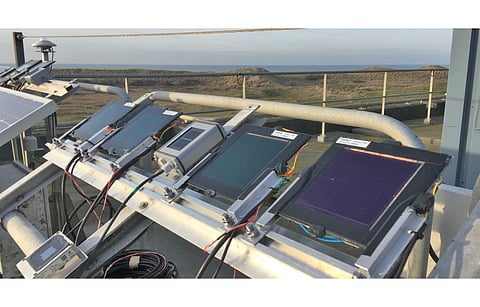

A consortium of Dutch and German companies led by the Netherlands Organization for Applied Scientific Research (TNO) is soon to bring to the market a new tandem solar module of monolithic perovskite-silicon solar cells calling it a step in bringing PV production back to Europe, rebuilding a competitive supply chain within the continent, and drive carbon reduction through to 2030.
TNO Program Manager of Tandem Technology and Applications, Gianluca Coletti explained, "The monolithic tandem cell technology used in this project is based on commercial PERC c-Si cells with planar front side, avoiding complexity in dealing with silicon surface texture."
The configuration will have bifacial modules along with glass-glass encapsulation to increase output and protect perovskite cells from moisture. Partners on the project expect this tandem module to report a power conversion efficiency of more than 300W/m², up from 200W/m² reported for conventional modules.
This research is being conducted under a Netherlands Enterprise Agency's (RVO) 4-year project called FIT4Market using tandem configuration that they claim can achieve higher efficiencies compared to the current silicon-based modules.
According to TNO, "The FIT4Market project will validate that tandem module based on currently used PERC bottom cells are industrially manufacturable, competitive in efficiency and cost and competitive in stability. Further, field tests will provide data to enhance bankability; and the project will also interact with end-users of the new technology."
TNO will develop large area perovskite on silicon bottom cells that will be provided by Qcells for the tandem module, while Dutch production equipment maker Tempress and TNO will pitch in with their emitter technology. SMIT Thermal Solutions, also from The Netherlands, will develop a model framework for scaling further to multi-wafer processing. A screen-printed top contact will be added. Further, another Dutch equipment maker, Levitech will contribute with its atomic layer deposition technology.
Industrial module interconnection and encapsulation compatible with perovskite requirements will also be applied by TNO, and Yparex is in charge of optimizing encapsulants for best compatibility with perovskite material properties. Qcells Benelux will test the tandem laminates in the field.
For Qcells, this isn't the maiden attempt to explore tandem technology — in November 2022 it announced a European Union funded industrial tandem solar cell pilot line in collaboration with Germany's Helmholtz-Zentrum Berlin (HZB) Pepperoni project (see Pilot Line For Tandem Solar Cells Under EU's Pepperoni Project).
TNO sees potential for tandem technology for a market like the Netherlands that it says is keen for innovative products due to limited availability of land. It can also help optimally utilize commercial rooftops for power generation. TNO's Coletti provided at the TaiyangNews High Efficiency Solar Conference in November 2022 an Outlook of Next Generation Technologies (see presentation here).
